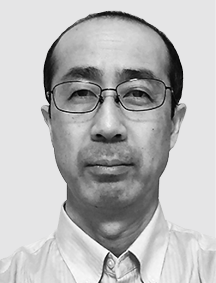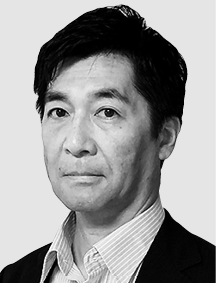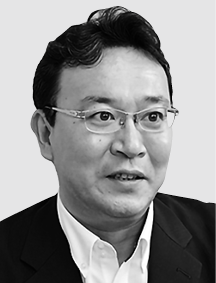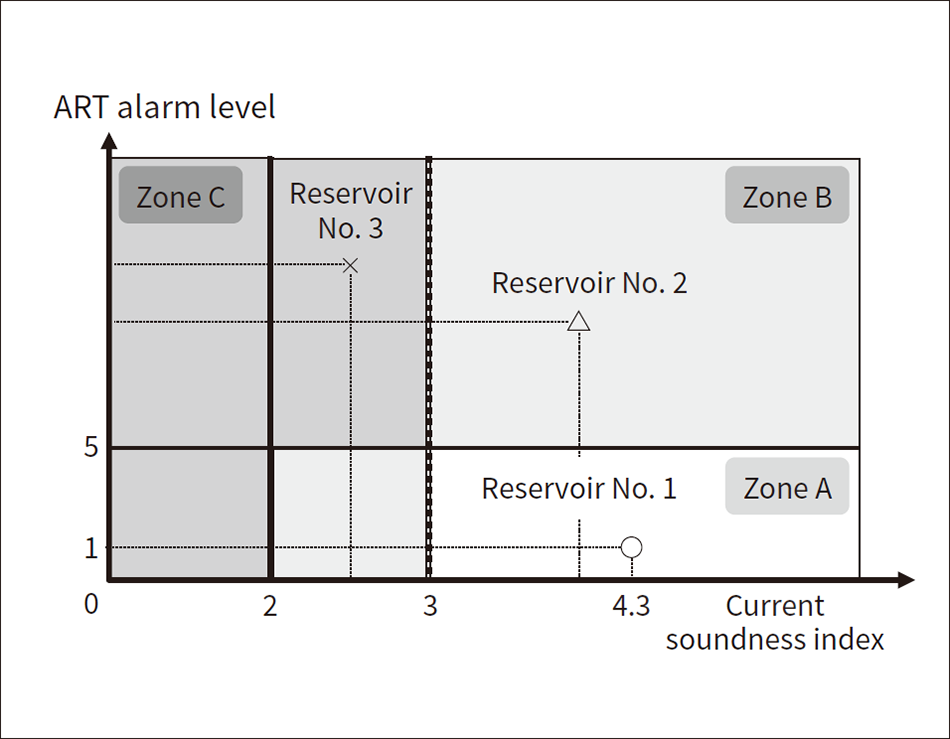Digital Technologies and Public-Private Solutions for Water O&M
Highlight
Japan’s water supply and sewage utilities are already facing a number of challenges, including a decrease in the water supply population and decline in fee revenues due to a shrinking population, increasing demand for updating of water supply facilities, a review of plant operations to take into account the effects of climate change, and the need to become carbon neutrality. Some measures being taken to address these challenges include public-private partnerships and wide-area implementation. When private companies participate in water utilities, they can be expected to provide high-quality services and to reduce costs by leveraging their technical capabilities and expertise, which is effective in enhancing the operational infrastructure of water supply and sewage utilities. This article presents Hitachi’s continued efforts to improve technology through work at contracted sites and elsewhere, with a particular focus on solutions using digital technology.

Introduction
The total population of Japan peaked in 2010 (at about 128.06 million) and has been declining ever since(1). This is a major challenge that many water utilities are already facing because it has led to a decline in the water supply population and fee revenues, as well as to the issue of how to pass on technological expertise due to the aging of skilled workers and staff shortages. In addition, the demand for large-scale updates to aging waterworks facilities is expected to peak in the 2020s and 2030s, requiring further budget allotments and scheduled updates of facilities. As an example, in recent years, there have been reported cases of aqueduct failures due to aging and other factors, as well as failures of water catchment facilities for headwater rivers(2). In response, the government ministries and agencies that manage water utilities, in a follow-up to the Ministry of Health, Labour and Welfare’s Water Supply Vision, have been conducting studies for achieving safety, resilience, and sustainability and their relation to the maintenance and repair of facilities(3), optimal layout planning(4), carbon neutrality(5), and other topics.
Public-private partnerships (PPPs) are one means of realizing sound and stable waterworks operations. Methods leveraging the technical capabilities and expertise of private companies are incorporated into waterworks operations, which until now have been mainly carried out by the public sector (local governments), to enable the provision of higher quality services and reduction of costs, thereby helping to strengthen the operational infrastructure of waterworks services. Moreover, this is also consistent with the “implementation of public-private partnerships” that is called for in the revised Water Supply Act.
This article presents the operation & maintenance (O&M) support digital solution, a technology that supports visualization, labor saving, efficiency, and passing on of knowledge in operation and management and maintenance tasks by utilizing digital technologies such as the Internet of Things (IoT), artificial intelligence (AI), and analytics. This also describes the verification efforts in the Hitachi Group’s public-private partnership projects and the future plans for implementation.
Water Service Solutions
To provide solutions to these challenges, Hitachi, Ltd. has developed digital transformation (DX) solutions for the water supply business. These DX solutions for the water supply business include wide-area data collection, asset management, and data utilization (see Figure 1). One of the features of this system is the centralized management of data and bi-directional monitoring and control on the cloud while maintaining security, real-time performance, and reliability. The following is an overview of each solution.
Figure 1 — Available DX Solutions for Water Utilities The system collects operational data (water volume, water level, water quality, etc.) and inspection data from each water purification plant owned by the utility and also shares the solutions with them for enabling wide-area implementation by water utilities.
The system collects operational data (water volume, water level, water quality, etc.) and inspection data from each water purification plant owned by the utility and also shares the solutions with them for enabling wide-area implementation by water utilities.
Support Options for Maintenance Work
Figure 2 — Facility and Equipment Diagnosis Using IoT Sensors In addition to data from existing monitoring and control systems, the system also uses measurements from Internet of Things (IoT) sensors to achieve more advanced diagnosis of equipment and devices.
In addition to data from existing monitoring and control systems, the system also uses measurements from Internet of Things (IoT) sensors to achieve more advanced diagnosis of equipment and devices.
- Visualization
The first step in a digital solution is to present the collected data to the user in an appropriate format. The visualization function integrates and visualizes the data collected by the monitoring and control system, inspection data, and water quality data. Also, since the measured values of various additional sensors installed in rivers and pumps can be easily imported, this is expected to enable enhanced monitoring of equipment and facilities and advanced management through diagnostics as described later. - Asset management
The AI-based equipment diagnostic function uses adaptive resonance theory (ART) to diagnose whether the current state of the equipment deviates from the range of the learned data. In addition to the data obtained from the monitoring and control system, data that significantly indicates the deterioration of equipment, such as the measured values from vibration sensors and temperature sensors installed on rotating machines is effective for diagnosis (see Figure 2)(6).
This solution also provides a function that can calculate an overall soundness index for equipment from inspection results that is used for the micro-management of facilities and equipment. By extrapolating the actual result of the soundness index, it is possible to estimate when maintenance is required from a medium-term perspective. Furthermore, Hitachi has devised a method to determine the health of equipment by combining the soundness index with ART, and is currently evaluating the usefulness of this method at a water purification plant that is under contract for operation and management.
Support Options for Operation and Management Work
Figure 3 — Overview of Expertise Extraction in Plant Operation Support The system extracts operational constraints from the actual operation data using machine learning, and prepares plans equivalent to those made by skilled operators. The plan is output as operation guidance for contributing to operation and management support when there is a shortage of operators or when no one is available to pass on the technical knowledge.
The system extracts operational constraints from the actual operation data using machine learning, and prepares plans equivalent to those made by skilled operators. The plan is output as operation guidance for contributing to operation and management support when there is a shortage of operators or when no one is available to pass on the technical knowledge.
- Operation support function
The operation support function uses statistical methods and machine learning to extract the operator’s know-how (such as the types of equipment used and water level control values) from past operational performance data(7), (8). The function then prepares an operation plan using the acquired conditions and presents appropriate operation guidance to the user (see Figure 3). Recently, Hitachi has added a method for managing the amount of water intake, filtration reservoirs, and distribution reservoirs, respectively, to minimize the number of operations while satisfying demand forecasts. Although it depends on the specifications of the water purification plant, the site where the effectiveness of this solution was verified used guidance where the number of operations was set to five times per day. By adopting this function, stable water volume control and more efficient operation can be expected even when run by unskilled workers. - Water quality management
For the management of items in the water quality standards and residual chlorine concentration for water supply operations, it is important to predict the dosage of necessary chemicals and the water quality before and after treatment. The water quality management function provides this information as guidance by using physicochemical models and AI. Moreover, using the cloud to centralize information from various locations enables even more data to be used quickly. This has the advantage of facilitating the collection of data necessary for training AI and also allows more precise tuning of even conventional prediction models in response to fluctuations.
As described above, in its water service solutions, Hitachi has built support functions mainly for maintenance work and operation and management work. Hitachi will continue to improve its solutions by taking into account on-site needs and to develop and commercialize new functions.
Hitachi Group Initiatives
Figure 4 — Public-Private Partnership Business Models Offered by Hitachi Hitachi offers solutions in a variety of forms that make it the ideal partner for water utilities. These range from partial and full-service outsourcing to DBO arrangements, PFIs, and concessions.
Hitachi offers solutions in a variety of forms that make it the ideal partner for water utilities. These range from partial and full-service outsourcing to DBO arrangements, PFIs, and concessions.
Various forms of business models for public-private partnerships are available, including partial outsourcing, in which limited areas such as operation and management are outsourced to the private sector, full-service outsourcing, in which not only operation and management, but also a wide range of maintenance and management are outsourced, design build operate (DBO), in which design, construction, and long-term maintenance of the facility after construction are outsourced to the private sector, private finance initiative (PFI), in which even financing is provided, and concessions (see Figure 4).
The Hitachi Group is currently involved in a wide range of projects, from partial outsourcing to DBO and PFI, with the aim of realizing a sustainable water supply based on its long experience in providing products and systems, after-sales service, and technological development in the water infrastructure sector.
Hakodate (Hokkaido) DBO Project
Hakodate City’s waterworks system was established in 1889 as the second modern waterworks system in Japan. Since then, the Akagawa Koku Water Purification Plant, Akagawa Teiku Water Purification Plant, and Asahioka Water Purification Plant have been constructed, and in 2004, nine smaller water supply systems were added as a result of a merger with four neighboring towns and villages, and these plants are currently providing water to approximately 240,000 people (as of August 2022).
One of the objectives of the DBO is for Hakodate City to select and develop private companies as partners to respond to future changes in the waterworks service environment and to achieve a safe and stable supply of water and more efficient facility operation over the long term. A special purpose company, Hakodate Aqua Solution, Ltd., formed from three companies (two Hitachi Group companies and a local company), is currently implementing a 22-year waterworks project from April 1, 2019, to March 31, 2041. This project includes the updating and improvement of the facilities, machinery, and electrical instrumentation of the water purification plants. In April 2022, the updating and improvement of the filtration pond at the Akagawa Koku Water Purification Plant, which is a key water purification plant, was completed and operation was started (see Figure 5).
To verify the above-mentioned operation support technology, Hitachi ran it for a total of 10 days during water operations (only at night) at the Akagawa Koku Water Purification Plant and Akagawa Teiku Water Purification Plant, for which operation and management services are commissioned, in the form of guidance issued from a PC not directly connected to the monitoring and control system(7). As a result, although additional operations were required due to sudden changes in settings and disturbances such as water demand that was approximately 10% lower than the annual average, operation was able to meet the target water level with the target of two or less additional operations per day (see Figure 6). Hitachi will continue to contribute to the maintenance and development of Hakodate’s waterworks system to resolve future issues facing the city.
Figure 5 — Akagawa Koku Water Purification Plant and Overview of DBO Project The scope of the DBO project extends from upgrading mechanical and electrical equipment at the water purification plant to its operation and maintenance.
The scope of the DBO project extends from upgrading mechanical and electrical equipment at the water purification plant to its operation and maintenance.
Figure 6 — Example of Results of Validation Test Using the Operation Support Function Operation plans are prepared using statistical processing, machine learning, and optimization techniques, and guidance is provided at predetermined times. The system is expected to achieve stable operation and management by also indicating any necessary additional operations.
Operation plans are prepared using statistical processing, machine learning, and optimization techniques, and guidance is provided at predetermined times. The system is expected to achieve stable operation and management by also indicating any necessary additional operations.
Full-Service Outsourcing for the Nakagawa Water Purification Plant
The Ibaraki Prefecture Public Enterprise Bureau has established 11 water purification plants (three for water supply, one for industrial water, and seven for joint water supply and industrial water) for the purpose of providing wider access to the water supply and expanding the industrial water supply area, and manages and operates the water supply business and industrial water supply business. Of these, the Nakagawa Water Purification Plant is a dedicated industrial water purification plant with a capacity of 122,680 m3/day, which started supplying water in 1966. Due to the adoption of a policy to shift to full-service outsourcing in phases, a public tender was conducted for the selection of a contractor for this water purification plant, and Hitachi and Akira Co., Ltd., as a Hitachi-Akira special joint venture (JV), were commissioned to provide operation and management and maintenance services for the first phase of the project in FY2016 and the second phase from FY2019 (see Figure 7).
This JV is aiming for more efficient maintenance and management of water purification plants through the integration of operation, management, and maintenance. It is also making use of the resources of Group companies, such as an emergency support system that integrates the network of bases of JV-affiliated companies and centralized data management using the cloud. In addition, the JV is implementing initiatives to optimize inspection details and reduce costs through digital solutions, including examination of energy conservation in operation and management operations (see Table 1).
In the asset management initiatives described in the previous section, a maintenance management method that takes advantage of the respective merits of the soundness index and equipment diagnosis is used, and periodic evaluations are continued. The soundness index and ART diagnostic results are plotted and used as indicators to determine the state of equipment and future actions based on their respective positions (see Figure 8). At the time of writing, the system is in a favorable zone with a high soundness index and low alarm level (zone A in Figure 8). Going forward, Hitachi intends to use the declining soundness index and increasing alarm levels as a basis for enhancing daily inspections and adjusting the scheduled timing of maintenance.
Table 1 — Overview of Full-service Outsourcing Contract for Nakagawa Water Purification Plant The full-service outsourcing contract for Nakagawa Water Purification Plant encompasses operation, management, and maintenance.
The full-service outsourcing contract for Nakagawa Water Purification Plant encompasses operation, management, and maintenance.
Conclusions
This article has described the Hitachi Group’s vision for systems in the waterworks field and its supporting technologies to be implemented, as well as examples of public-private partnership solutions. The functions required for waterworks services are expected to become increasingly sophisticated, and the Hitachi Group will continue to contribute to achieving sustainable waterworks services and improving services as the best partner for water utilities by providing water infrastructure solutions.
Acknowledgment
The authors would like to express their deepest gratitude to the Hakodate City Enterprise Department, the Ibaraki Prefecture Public Enterprise Bureau, and other parties involved for their tremendous cooperation in the development of the various technologies described in this article.
REFERENCES
- 1)
- National Institute of Population and Social Security Research, “Population Projections for Japan (January 2012 Estimate)” (Jan. 2012) in Japanese.
- 2)
- Wakayama City Enterprise Bureau, “Investigative Committee on Damage to the Musota Water Pipe Bridge” (May. 2022) in Japanese(PDF Format, 1.68MByte)
- 3)
- Ministry of Health, Labour and Welfare (MHLW), “The Guideline on Asset Management in Water Utility” (Sept. 2019) in Japanese.
- 4)
- MHLW, “Work to Study Optimal Layout Plans for Water Supply Facilities for Developing a Water Supply Infrastructure Enhancement Plan” (Mar. 2022) in Japanese.
- 5)
- MHLW, “Report: Series of Studies, etc. on Construction of Decarbonized Water Supply Systems” (Jun. 2020) in Japanese.
- 6)
- T. Suzuki et al., “Practical Applications of ICT in Operation and Maintenance Management that Contribute to Operational Efficiency and Stable Supply (IV),” Proceedings of the 101st Annual Conference and Symposium of Japan Water Works Association (Oct. 2022) in Japanese.
- 7)
- T. Yukawa et al., “Improved Efficiency of Water Purification Plant Operation and Management Operations by Reducing the Number of Equipment Operations and Fixing Operation Times: Construction and Demonstration of a Water Volume Management System,” Proceedings of the Japan Water Works Association’s General Assembly and Research Conference 2021, p. 542 (Oct. 2022) in Japanese.
- 8)
- N. Ando et al., “Impact Evaluation of Emergency Declaration on Water Purification Plant Operation Support System Using Water Demand Forecasting,” EICA: Journal of the Society of Environmental Instrumentation Control and Automation (EICA), 26 2/3, pp. 39–43 (2021) in Japanese.









